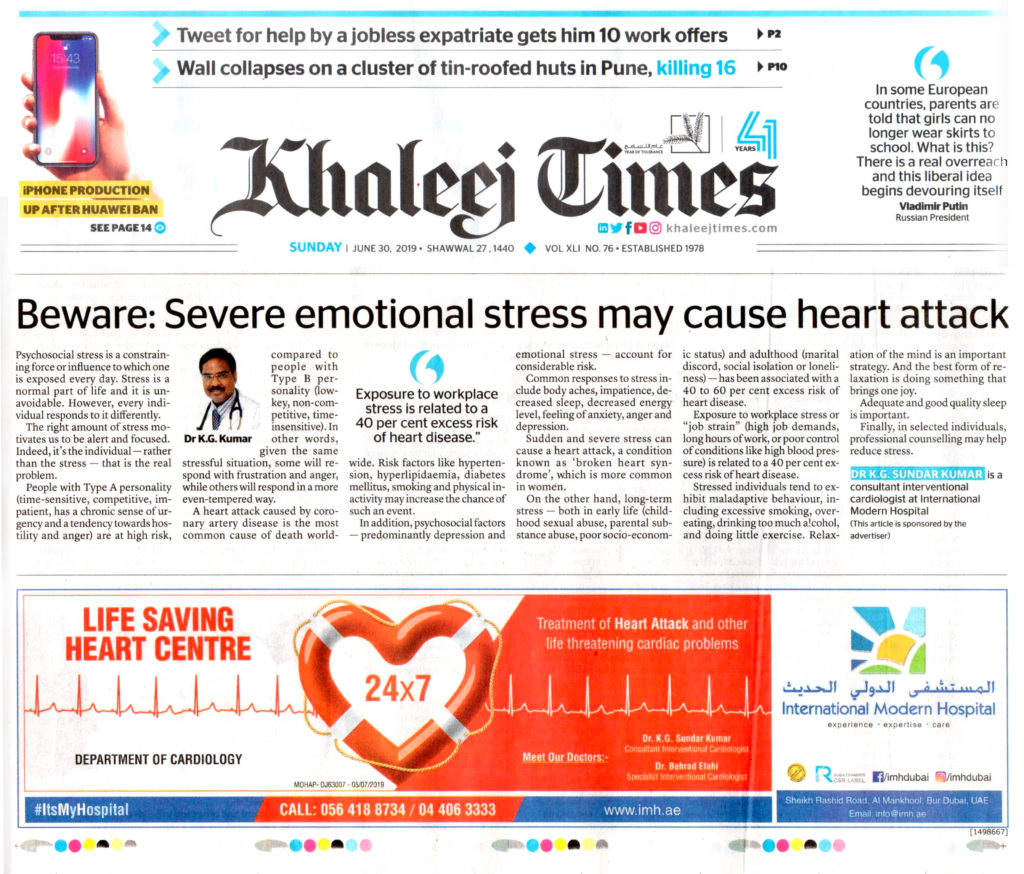Beware of Pneumonia?
Pneumonia is a leading cause of hospitalization in both children and adults in the United Arab Emirates. It is a major cause of death among all age groups and is the 4th leading cause of death in the world.
1) What is pneumonia?
Pneumonia is a common lung infection caused by bacteria, a virus or fungi.
The infection causes inflammation of the lungs' air sacs, leading to collection of
fluid or pus there.
2) What are the symptoms?
The symptoms of pneumonia can range from mild to severe, and include cough with phlegm, fever, chills, breathing difficulty and chest pain. With pneumonia, you may cough up phlegm that is yellow, green, or sometimes bloody.
3) What are the risk factors?
The people most at risk to develop pneumonia are:
- Infants and young children
- Adults 65 or older
- Pregnant women
- People taking medications that suppress the immune system
- People with diseases that weaken the immune system, such as cancer, HIV, and AIDS
- People with lung and respiratory conditions, such as asthma.
4) How is pneumonia transferred from person to person?
Pneumonia can be spread by way of someone sneezing or coughing. When a person sneezes or coughs, little droplets spread throughout the air. These droplets contain the infectious organism. They are then inhaled and may, in some instances, cause pneumonia.
5) How Is Pneumonia Diagnosed?
Pneumonia is diagnosed based on your medical history, a physical exam done by doctor, and some tests. Investigations include blood tests- to confirm the infection and to try to identify the germ that is causing your illness. Chest X-ray to look for the location and extent of inflammation in your lungs. Sputum tests are done on a sample of phlegm taken after a deep cough; to look for the type of the infection. In some special circumstances additional tests may also be performed. This includes, CT scan of the chest to get a better view of the lungs and look for complications. Arterial blood gas test, to measure the amount of oxygen in a blood sample also performed. Bronchoscopy is a procedure used to look into the lungs' airways to see whether something else is affecting your airways, such as a blockage. They may also take fluid samples or a biopsy of lung tissue via bronchoscope.
6) How Is Pneumonia Treated?
Because pneumonia comes in different forms, treatment plans vary widely. Some people may only need bed rest, while others may require hospitalization. If your pneumonia is so severe that you are treated in the hospital, you may be given intravenous fluids and antibiotics, as well as oxygen therapy, and possibly other supportive treatments.
7) What are the Complications of pneumonia?
Severe pneumonia may cause, spread of infection to other parts of the body, collection of fluid around the lungs, respiratory failure and death.
8) How to Prevent Pneumonia?
You can reduce your risk of getting pneumonia by vaccination, following good hygiene practices, quitting smoking and staying away from sick people, if possible.
Dr. Muhammed Aslam
Specialist Pulmonologist
International modern hospital Dubai
